47. Into Bolivia (Tupiza, Bolivia)
My girlfriend returned to Buenos Aires for work so I was now travelling solo. I was looking forward to going to Jujúy for a while because Trent, one of my best friends from NZ, did a high school student exchange in Jujúy in like 1994. So I was hoping to meet some of his old school friends and see his old turf. Trent'd emailed me a bunch of people's contact details so I sent them an email, and hung out in Jujuy for 3 days waiting for a reply. Which never came, I presume because they didn't check their email while I was waiting. I did manage to get hold of Trent's host family and I had a weekend lunch with them. There I met one of Trent's school mates Guillermo and he showed me around the town and it's surroundings which was great. We drove to nearby Purmumarca where there's the famous Cerro de Siete Colores (Seven Colour Hill), as well as checking out the lake and their old High School.

The Seven Colour Hill to the right
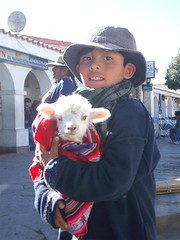
A young boy with his young llama
From there we caught the afternoon train to Tupiza, 3 hours away. It was a waste of time paying double for the executive class seats as they didn't give us any food or anything since we were only going to Tupiza. And the ticket seller bullshitted as there was no air conditioning either.
Near Tupiza is the town of San Vicente which is where Butch Cassidy and the Sundance Kid made their last stand and were killed in a shootout with the police. The hostal we stayed in rented us the 1969 movie starring Paul Newman and Robert Redford which was actually really good.
In the movie the outlaws had robbed one train too many so to escape the heat they fled to Bolivia, which at the time had the richest mine in the world in"Bolivia!? What the hell's a Bolivia?"
"I don't know it's a country in Central or South America or somewhere."
- Paul Newman in Butch Cassidy and the Sundance Kid
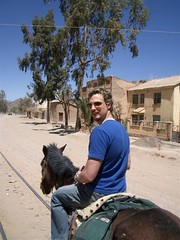
Riding out of town aboard Chocolate
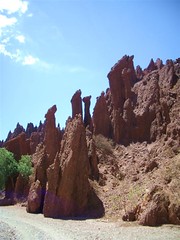
Valle de los Machos. Can you guess why it's called that?
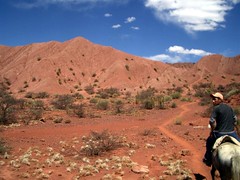
Following our guide Eddy up the hill
The next day we decided to relax in the sun by a river. But to get to the river we had to either walk 12km, wait 3 hours for a bus to take us there, or try hitch a ride on a truck. We went for the hitching option, asking a truck driver if we could ride in the back of his truck for a couple of bolivianos. He agreed and we set off, only to stop a minute later and pick up about ten locals who were also hitching a ride down the road. The guy drove pretty fast and although it was rough going we were soon there. Mariángeles didn't enjoy the ride anywhere near as much as I did, she was really scared we were going to crash and wanted to get off early. Even getting into the back of the truck was a mission for her.
We soon found our river but finding a swimming spot was difficult as there was a fierce cold wind blowing down the canyon which we couldn't find shelter from. After a couple of hours of looking we found a quiet spot in front of La Torre (The Tower), a giant natural rock landmark.
That afternoon we shared our packed lunch with a couple of local kids of about ten years old who we'd met fishing in the river with their bare hands. They followed us around keeping us company which was cool. I caught another truck back to the town and Mariángeles decided not to risk another truck ride and walked back into town with the two local kids.
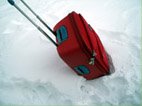
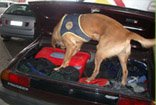
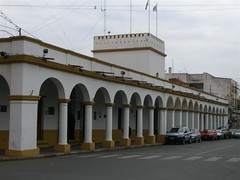
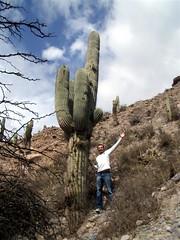
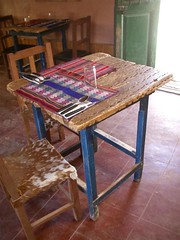
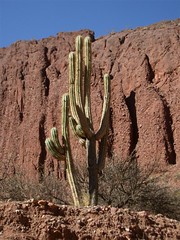
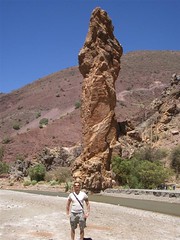
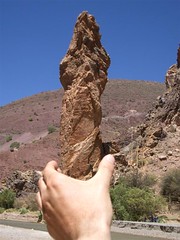
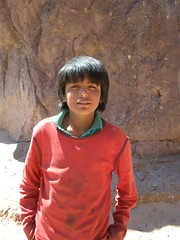
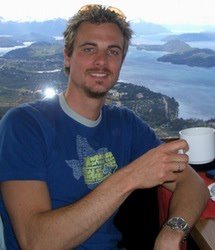


3 Comments:
I think I got hassled more for money in the large cities of Argentina by beggers or drunks. Here, in the poorest country in South America, I haven't been asked for money yet.
Those kids didn't ask for anything but hinted that they were hungry. I didn't mind sharing.
-Matt
By mattyboy, at 6:53 am
mattyboy, at 6:53 am
Hey, haven't been reading for a while and am trying to figure out where to catch up! Some great shots. You have been in some amazing country with all sorts of cool sedimentary geology of the sort found in the US southwest.
La Torre is an injection structure. Here's a picture of another one, in the Kodachrome State Park in Utah: http://www.flickr.com/photos/turgeon/15702551/in/set-377960/
Injection structures are pretty uncommon. Plus, as you've noted, they're very phallic, and everyone loves a phallus!
Sedimentary rocks are layers of mud that pile on top of each other and eventually turn to rocks. Injection structures are formed when an earthquake vibrates the layers while they are still somewhat liquid. The lower layers then shoot up into the upper layers.
To have an injection structure, the part that shoots up has to be made of something that is harder to erode than what's surrounding it. My guess is that you've got some mudstone over sandstone.
Don't you feel better knowing that?
By Jason, at 3:58 am
Jason, at 3:58 am
All right, thanks Jason!
By mattyboy, at 4:36 am
mattyboy, at 4:36 am
Post a Comment
<< Home